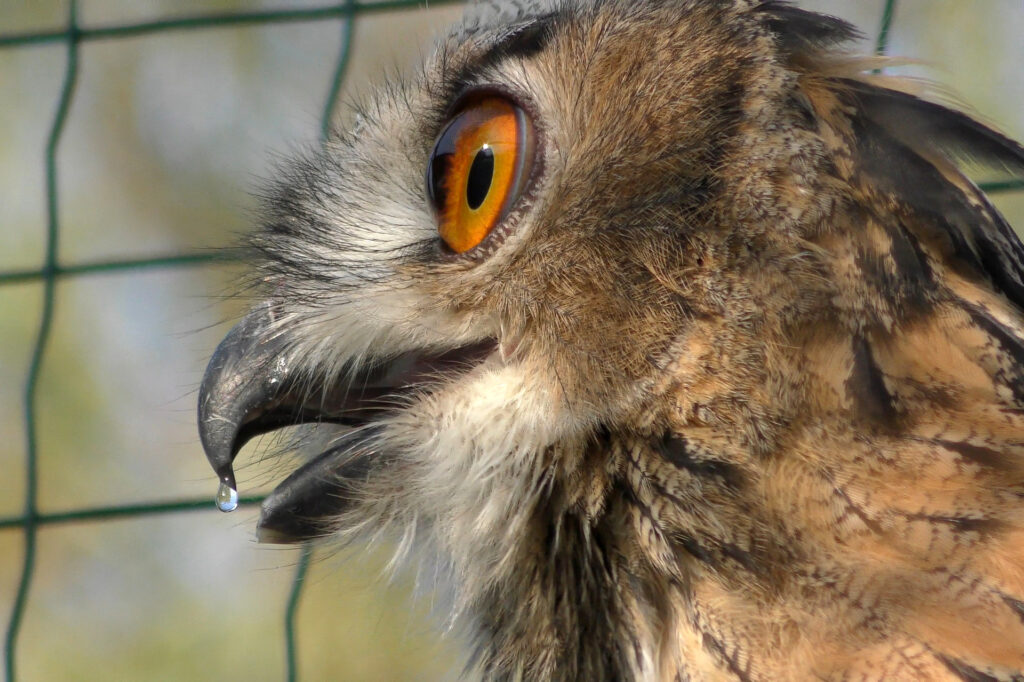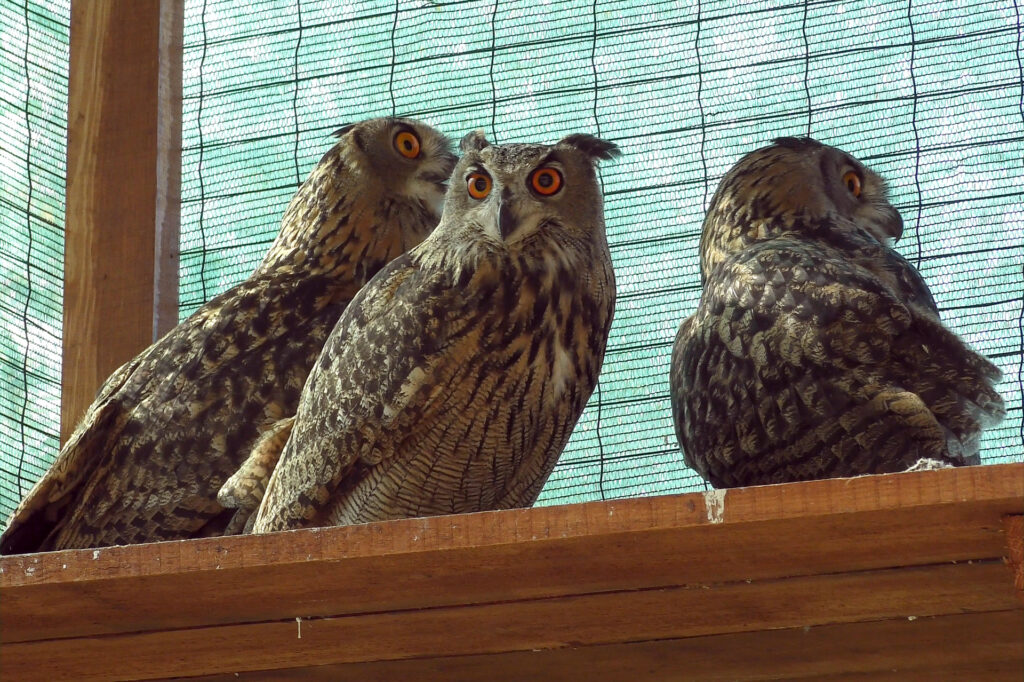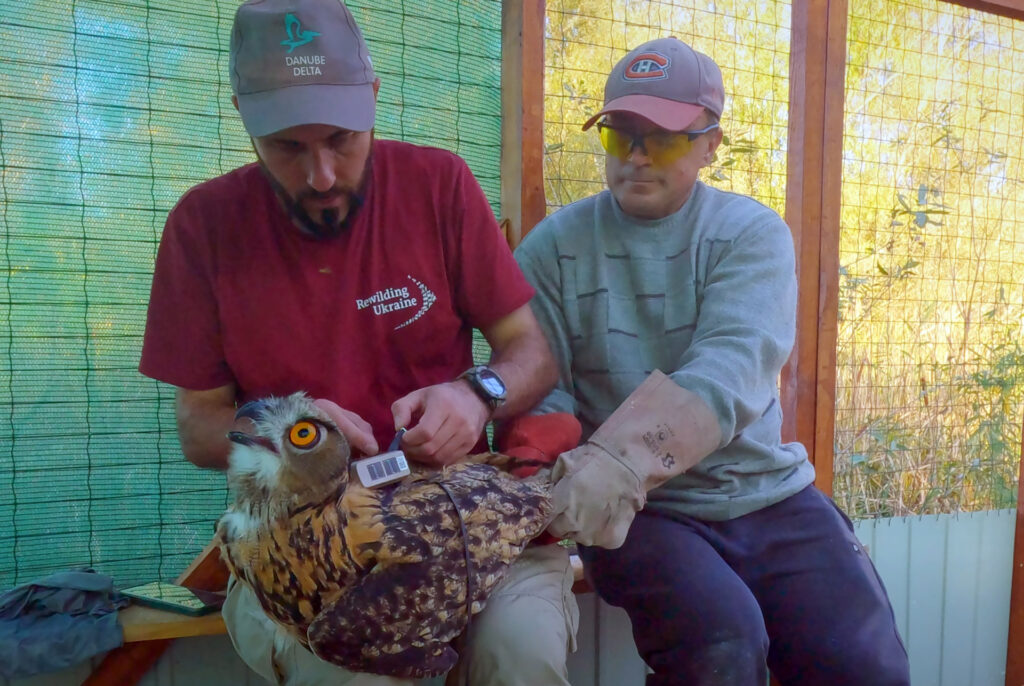Five eagle owls have just been released in the Danube Delta rewilding landscape in Ukraine, as part of an ongoing reintroduction programme. The releases represent a significant step forward in the programme, which aims to re-establish a viable population of the birds in the landscape and enhance the overall health of the delta ecosystem.

New releases take flight
Five Eurasian eagle owls have been released in the Danube Delta rewilding landscape in Ukraine, as part of an ongoing reintroduction programme supporting the comeback of this iconic and ecologically important species. This is the largest single-batch release of eagle owls since the programme kicked off in 2019.
The reintroduction programme, which is overseen by the Rewilding Ukraine team in cooperation with the Danube Biosphere Reserve and other local partners and funded by the Endangered Landscapes & Seascapes Programme through Rewilding Europe, follows a positive feasibility study conducted using IUCN guidelines. The aim is to re-establish a viable population of the owls – which are apex predators – in the landscape. Fifteen owls have now been released through the programme, with further releases in the pipeline. The first ten birds, all sourced from Odessa Zoo, were released between 2019 and 2021.

Towards a healthier delta landscape
As keystone predators, eagle owls play a vital role maintaining the health of ecosystems. They are particularly useful in controlling rodent populations, which can increase significantly if the owls disappear. As the number of eagle owls resident in the Danube Delta grows, the birds will help to control the area’s burgeoning population of rats. This, in turn, will benefit many of the other bird species that breed here, as the rodents consume a large number of their eggs every year.
Eagle owls hold cultural significance in Ukraine as they feature in many of the country’s fairy tales. As they become more common in the delta, they should also help to attract more visitors, benefitting local communities by boosting the area’s developing nature-based economy. Despite the impact of the ongoing conflict in Ukraine, rewilding efforts in the Danube Delta continue. This latest release of eagle owls demonstrates resilience and hope for restoring the region’s biodiversity – and eventually attracting international visitors – even in these challenging times.
While Ukraine was once home to a thriving eagle owl population, the birds are now restricted to the Polyissa region in the north and Donbass region in the east. Their decline is largely due to a pre-1969 eradication campaign, as well as nest disturbance, the historic use of pesticides, and collisions with power lines. In the Danube Delta, where the species was rarely seen prior to the reintroduction programme, these threats are no longer a factor. Eagle owls prefer to stay within the same territory, unless they are forced to leave due to food shortages, or if they are driven out by other owls. This makes natural recolonisation of the delta by birds from other parts of Ukraine highly unlikely.

Journey into the wild
The five owls that have just been released originated from Limpopo Zoo, located in the Lviv region in the west of Ukraine. Prior to their release, they were moved to Odessa Zoo to adapt to wild conditions in a controlled setting.
Following their stay at Odessa Zoo, the owls were transferred to a newly built adaptation enclosure near Vylkove in the Danube Delta, where they spent a few weeks acclimatising to the area.
Keeping track
As with previous releases, the Rewilding Ukraine team will monitor the movement and behaviour of some of the recently released owls using GPS transmitters. The information gathered will help to inform future rewilding efforts. While the transmitters fitted to previously released birds have now stopped functioning, the local rewilding team remain cautiously optimistic about the outlook for the birds in the landscape.
“People have reported hearing the owls in the Ukrainian and Romanian parts of the delta,” says Rewilding Ukraine field officer Oleksandr Gaidash. “So we know for certain that some of the released birds have survived and remain in the area. Eagle owls begin to breed in their second or third year, so signs of population growth will hopefully become apparent moving forwards.”
Invaluable support
Rewilding Europe’s work in the rewilding landscapes is supported by a wide range of highly valued partners. Rewilding Europe would particularly like to acknowledge those providing core funding – notably the Ecological Restoration Fund, the Dutch Postcode Lottery, WWF-Netherlands, and Arcadia. Their longstanding support plays a critical role in enabling to deliver and scale up rewilding impact in the Danube delta and other rewilding landscapes.